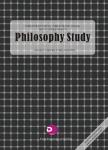Synesthesia, Experiential Parts, and Conscious Unity
Synesthesia, Experiential Parts, and Conscious Unity作者机构:University of Southern Indiana
出 版 物:《Journal of Philosophy Study》 (哲学研究(英文版))
年 卷 期:2012年第2卷第2期
页 面:73-80页
学科分类:050302[文学-传播学] 1205[管理学-图书情报与档案管理] 12[管理学] 05[文学] 120502[管理学-情报学] 0503[文学-新闻传播学]
主 题:synesthesia experiential parts consciousness unity visual perception auditory perception
摘 要:Synesthesia is the "union of the senses" whereby two or more of the five senses that are normally experienced separately are involuntarily and automatically joined together in experience. For example, some synesthetes experience a color when they hear a sound or see a letter. In this paper, I examine two cases of synesthesia in light of the notions of "experiential parts" and "conscious unity." I first provide some background on the unity of consciousness and the question of experiential parts. I then describe two very different cases of synesthesia. Finally, I critically examine the cases in light of two central notions of"unity." I argue that there is good reason to think that the neural "vehicles" of conscious states are distributed widely and can include multiple modalities. I also argue that some synesthetie experiences do not really enjoy the same "object unity" associated with normal vision.



